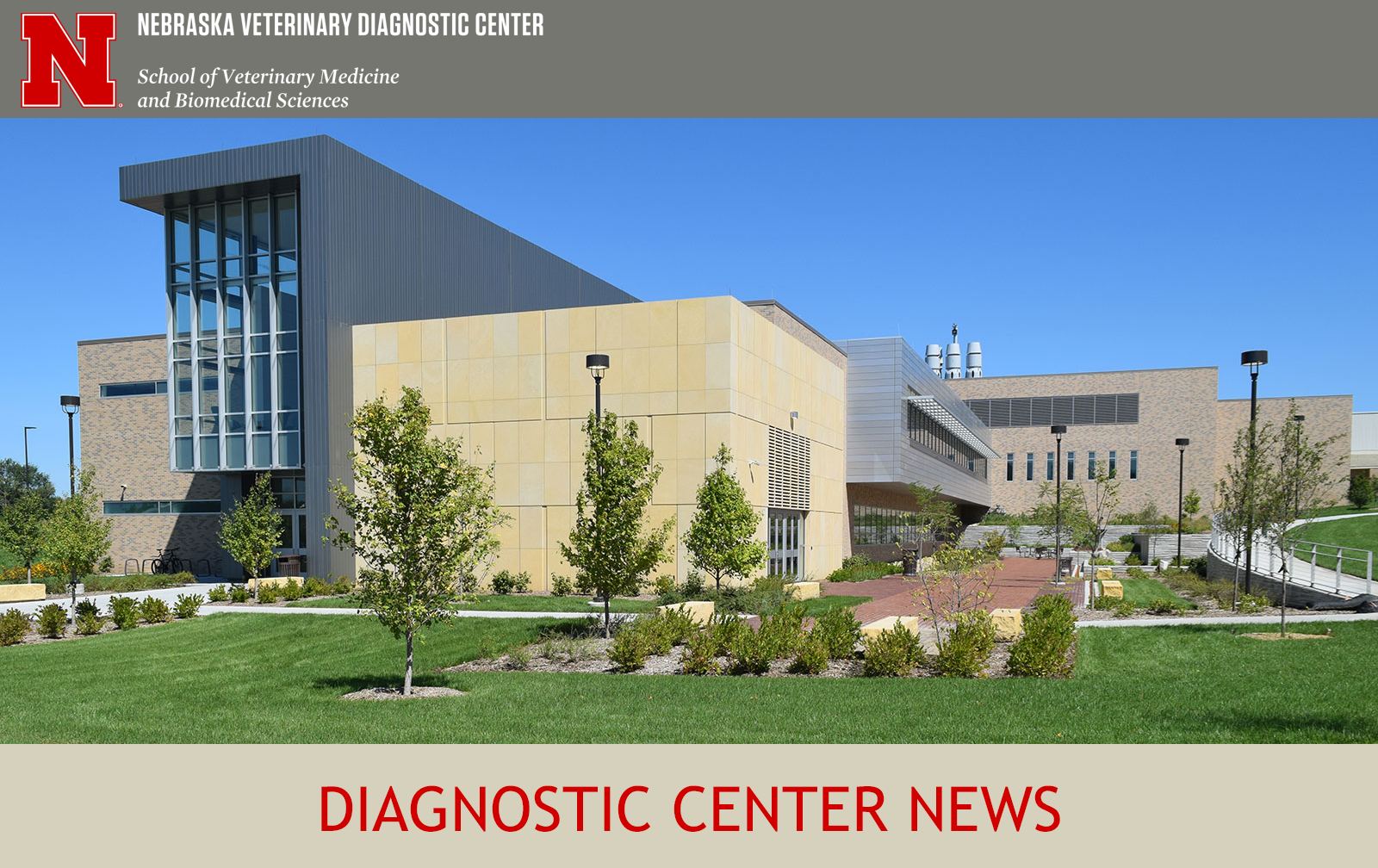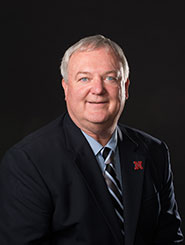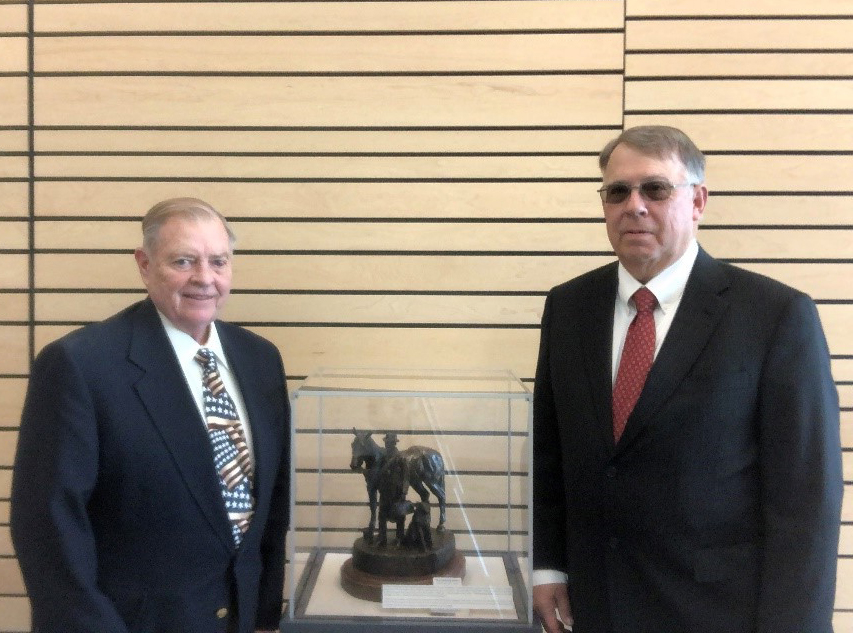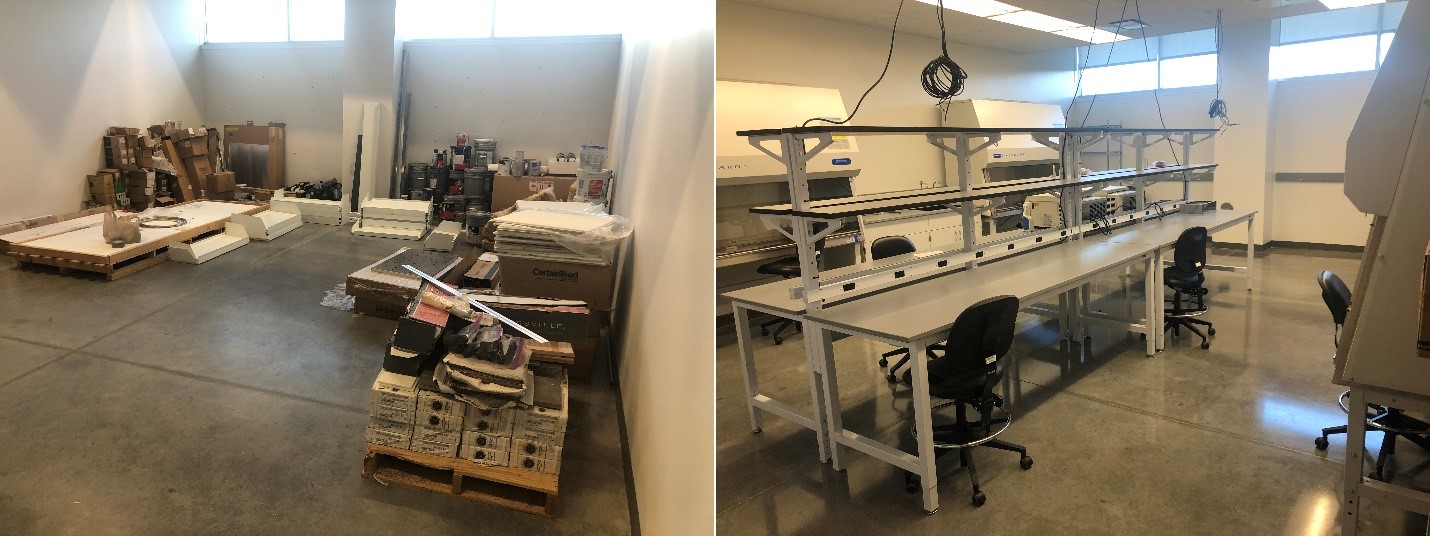NVDC News
An electronic newsletter for clients and stakeholders

December 2020
In this issue:
Notes from the director
Update on “Trich Direct Realtime PCR” test
Abortion season
Diagnostic New Year’s resolution - Get the most out of your biopsies
Mailing formalin-fixed tissues in the winter
NVDC personnel at the AAVLD Annual Meeting
NVDC pathology resident wins “Best Oral Presentation Award”
Dr. Alan Doster donates NVMA Centennial Bronze
New testing and new faces at the NVDC!
Notes from the director
By Bruce Brodersen

The topic this winter continues to be SARS-CoV-2 and the issues associated with it. We can’t forget that life goes on in the veterinary profession as well. Through the pandemic, we have been fortunate that our staff have all avoided COVID-19. We keep in mind that it is part of our job to stay healthy so we can serve our clients. I know you have had some hard times and some of you have suffered from COVID-19 directly or may have even lost loved ones, and I want to express my sympathy. I’m confident better times will come in 2021.
Thank you for your support, best wishes and Happy Holidays.
Dr. Bruce Brodersen
Update on “Trich Direct Realtime PCR” test
By Laura Leger and Dr. Dustin Loy
The NVDC is offering a PCR test that is more sensitive than the currently used PCR test. This “Trich Direct Realtime PCR” test utilizes phosphate buffered saline (PBS) as the transport medium. The VDC will provide the tubes containing PBS for the price of shipping. The price of the new test is $37 for a single sample and $50 for a pool of up to five samples. We have done extensive work validating the sensitivity and specificity of the test and sample stability. Once collected into the PBS tubes, the samples must be kept chilled and the lab must receive them within 72 hours. If you have questions regarding T. foetus collection, storage or shipment requirements please contact the NVDC at 402-472-8470.
Samples can now be shipped to the UNL Veterinary Diagnostic Center using the UPS EZ-Ship option. Please visit the Shipping page of the NVDC website for more information and to learn the benefits of using the UPS EZ-Ship option.
Abortion season
The arrival of winter and spring brings calving season. Accompanying calving season is fetal loss. Idiopathic abortion is the main diagnosis with these fetuses. However, it is important to rule out infectious causes. In order to rule out an infectious cause of abortion, it is important to submit a full set of tissues. That list of tissues is included on our Ruminant Submission Form. Those tissues include a collection of fresh and fixed specimens of brain, heart, lung, kidney, liver, placenta, and thymus along with abomasal contents. If the calf was born live, do not submit abomasal contents, as it will have been contaminated by environmental organisms after swallowing. Ideally, the placenta submission should include 2-3 different cotyledons. This is because lesions of an infectious cause are not always evenly distributed through the entire placenta.
We have developed a multiplex PCR test to detect the most common infectious causes of bovine abortion. That multiplex test includes Leptospira, IBR, Neospora, and BVD. PCR testing for each of these agents individually is still available but as a multiplex is considerably less expensive.
Diagnostic New Year’s resolution: Get the most out of your biopsies
By Dr. Mary Drozd
Getting and submitting biopsy sample is an investment for you and your client. Let us help you get the best results from your sample.
- Take a picture (or ultrasound, or radiograph). Before you excise the mass or sample a tissue, take a picture. Even a cellphone camera can take a good picture. You can email the image to the diagnostic lab (vdc2@unl.edu) with your clinic’s name and the pet’s name to have it added to their record.
- Ink tissues for margins and orientation. Sometimes the whole tissue won’t fit in the jar or you need to incise the tissue after surgery. Before you incise, ink the margins with surgical ink or any waterproof drawing ink. This can also be a good way to identify multiple biopsy sites.
How to ink a biopsy
1) Put the biopsy on a dry towel or paper towel and gently blot excess blood of fluid.
2) Use a wooden stick or Q-tip to paint the excisional surfaces or margins completely with ink.
3) Let the ink dry for 2-4 minutes. Write down the ink color and location information for the biopsy (e.g., Biopsy 1, black ink = left ear).
4) Put the biopsy in formalin and continue as usual.
- Send us the entire lesion! Some types of neoplasia or inflammation cause extensive necrosis or fibrous replacement of normal tissue. Masses most at risk include the spleen and oral masses. Don’t risk missing a diagnosis. If the lesion won’t fit in your formalin jar, use a larger jar or multiple jars.
Mailing formalin-fixed tissues in the winter
As a reminder, shipping tissues in the winter poses the risk of freezing the specimen. Freezing creates significant artifacts in the tissues. These artifacts are almost always so severe that it prevents us from making a diagnosis. In order to prevent the freezing of your biopsies, we recommend that you make a 9:1 mixture of your usual neutral buffered formalin with 95% ethanol. 100% ethanol is expensive and not readily available because it is drinkable and thus subject to different taxation. The most accessible source of ethanol is denatured alcohol from the local paint store.
NVDC personnel at the AAVLD Annual Meeting
This year, the AAVLD Annual Meeting was held online. The Members of UNL VDC participated in committee events and meetings. Dr. Dustin Loy serves as co-chair for the bacteriology/mycology committee and along with Dr. Kerry Sondgeroth from Wyoming, led a mini-symposium discussion on MALDI-TOF technology and the application of new methods using this technology to veterinary diagnostic labs. There was record attendance and participation in the virtual symposium from all over the world.
Dr. Loy also presented research conducted by the molecular section of the VDC to validate the new direct RT-PCR test for Trichomoniasis that uses PBS as a collection media to the U.S. Animal Health Association’s Bovine Trichomoniasis Committee. Research demonstrated the enhanced sensitivity of the new assay and stability of T. foetus RNA in PBS when held at refrigeration temperature.
Dr. Steffen, as a member of the Constitution & By-Laws and Pathology committees, attended those meetings. Debra Royal is a member of the Quality Assurance committee and a co-chair of the Membership committee. Deb is also a member of the audit pool which is a collection of AAVLD members who are specially trained to perform accreditation audits at member laboratories.
NVDC pathology resident wins “Best Oral Presentation Award”
In October, Dr. Matt Hille presented research results entitled “Rapid differentiation of Moraxella bovoculi genotypes 1 and 2 using MALDI-TOF MS profiles” to the 2020 AAVLD annual meeting.
Moraxella bovoculi represents the bacteria most commonly isolated from the eyes of cattle with infectious bovine keratoconjunctivitis. To date, only genotype 1 Moraxella bovoculi have been associated with diseased eyes, whereas genotype 2 Moraxella bovoculi is found on the corneal surface, conjunctiva, and nasopharyngeal mucosa of cattle without clinical signs of disease.
This project led to a new MALDI-TOF test being offered at the NVDC that can accurately determine whether an isolate represents a likely disease associated form. Clinically, this test could prove useful to veterinarians and/or producers who choose to develop autogenous vaccines in an attempt to combat bovine pinkeye. Given the high cost of autogenous vaccine production, this test can help assure the vaccine formulation includes only Moraxella bovoculi isolates of the disease associated genotype. This test will also prove useful within the NVDC as we continue to investigate the diversity within Moraxella spp. and the implications of that diversity on the pathogenesis, prevention, and treatment of bovine pinkeye.
Dr. Hille was awarded the “Best Oral Presentation” award for this work at the 2020 AAVLD annual meeting.
Dr. Alan Doster donates NVMA Centennial Bronze

Dr. Alan Doster has donated a limited edition “The Centennial Doctor” bronze statue to the NVDC. Dr. Doster is the former director of the Nebraska Veterinary Diagnostic Center and instructor at the School of Veterinary Medicine and Biomedical Sciences. He has asked that the statue remain permanently on display at the NVDC. His intent was that this statue would inspire all new and current veterinary students as well as veterinarians to be ardent supporters of veterinary education, their profession, and their state veterinary medical association.
The Nebraska Veterinary Medical Association commissioned creation of a limited number of the statues to depict a century of veterinary medicine in Nebraska. These statues were sold to raise funds to establish the NVMA Centennial Scholarship Foundation.
New testing and new faces at the NVDC!
The NVDC will have many new faces in the building starting in January. The NVDC has been directed to prepare to test the students, faculty, and staff of UNL for SARS-CoV-2, starting in January. The lab will offer the SalivaDirect test. As many as 5,000 samples per day are expected to be tested at the NVDC. Certification as a CLIA laboratory was one of the first steps in being able to perform this testing. Performing the large volume of tests will require a considerable number of individuals to perform the work that ranges from sample receiving and processing samples to testing and verifying results.
Future-proofing the NVDC included construction of a shell space for expansion. This shell space was created during construction of the new NVDC building. The shell space has now been finished out to accommodate a major portion of the SARS-CoV-2 testing process. The reception area has been shifted to accommodate a safe and isolated sample receiving area. Additional thermal cyclers and other equipment for automation were purchased and will be used during testing.
